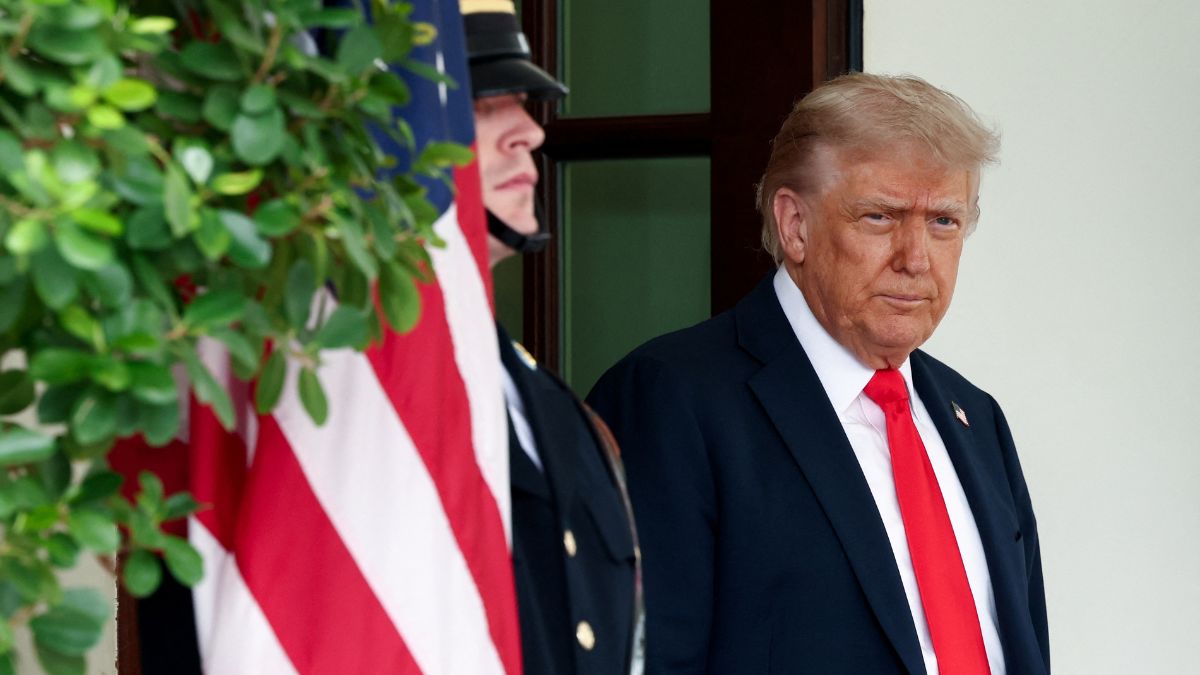Thousands of Nepalese people in the US are the new target of the Donald Trump-led administration.
In a short statement, the United States Citizenship and Immigration Services (USCIS) said that Nepalese nationals in the US under Temporary Protected Status (TPS) should prepare to leave the country on their own.
Since January, other countries such as Haiti and Afghanistan have also had their protected statuses removed, leaving thousands of people at risk of being deported.
ALSO READ | ‘Bring king back:’ Thousands hit streets in Nepal to demand restoration of monarchy
Moreover, Trump has brought back a broad travel ban for nationals from 12 countries, which his government claims pose security threats.
Why has the US taken this step against thousands of Nepalese nationals? What will this mean for them?
Let’s get you the answers to these questions and more.
Why Trump administration is ending protected status for Nepalese migrants
On Thursday, the Trump administration announced its decision to withdraw deportation protections granted to thousands of Nepalese nationals following the devastating 2015 earthquake.
US Homeland Security Secretary Kristi Noem issued a notice saying the administration would be ending Temporary Protected Status (TPS) for Nepal. This came after a review concluded that the country had made progress in recovering from the disaster.
“There are notable improvements in environmental disaster preparedness and response capacity, as well as substantial reconstruction from the earthquake’s destruction such that there is no longer a disruption of living conditions and Nepal is able to handle adequately the return of its nationals,” the notice said.
Impact Shorts
More ShortsAccording to the department, around 12,700 Nepalese migrants currently hold TPS. The status offers protection from deportation and permission to work for those already living in the US when their home countries face major crises such as natural disasters or conflict.
Out of this group, about 5,500 have lawful permanent residency in the US.
The notice mentioned that the termination would take effect 60 days from Friday, meaning the roughly 7,000 Nepalese nationals without permanent residency must either leave the country or change their immigration status by August 5, 2025.
After this deadline, they could face deportation.
Notably, Donald Trump, who began his second term as president in January, has vowed to carry out large-scale deportations and has pushed to remove temporary legal protections for certain groups, widening the scope of possible deportees.
ALSO READ | Cancelling contracts, making big disclosures: Who loses what in Musk-Trump breakup?
During his first term between 2017 and 2021, his attempts to scale back TPS coverage were blocked by federal courts.
However, last month, the US Supreme Court allowed the Trump administration to revoke TPS for hundreds of thousands of Venezuelans, a protection originally granted by Joe Biden.
Trump has also moved to end similar protections for nationals from Haiti, Afghanistan, and other countries.
Meanwhile, as the US imposes stricter visa rules, many Nepalese students are feeling the impact. Let’s take a closer look.
How US visa curbs are impacting Nepal
Nepali students looking to study in the United States are facing growing uncertainty after the Trump administration tightened visa rules for international students.
Notably, the US remains one of the top five study destinations for Nepali students, alongside Japan, Canada, Australia, South Korea, and the United Kingdom, according to Nepal’s education ministry.
However, recent orders from the Trump administration have made it harder not only for foreign nationals but also for student visa applicants to get approval.
Bishnu Hari Pandey, former president of the Educational Consultancy Association of Nepal (ECAN), told The Kathmandu Post that many students are now cancelling their plans to study in the US.
Instead, they are either exploring other countries or opting for higher education within Nepal.
“This also creates an opportunity for Nepali universities and colleges,” he said.
Consultancy operators say students who have just finished grade 12 and were preparing to apply to US colleges are the most confused, the report added.
What about refugees?
The Trump administration’s immigration policy shift has also affected thousands of Bhutanese Nepalis.
These individuals had fled ethnic cleansing in Bhutan in the 1980s after being stripped of citizenship rights, leaving them stateless. Since 2008, more than 90,000 have been resettled in the United States.
But many in the community now find their lives disrupted.
Notably, Immigration and Customs Enforcement (Ice) officers deported several Bhutanese Nepalis to Bhutan last month. At least four were turned away by Bhutanese authorities and were sent to India, where they later moved to a refugee camp in Nepal, according to The Guardian.
Large numbers of Bhutanese Nepalis had settled in struggling parts of Ohio and Pennsylvania, which were hit hard by the 2008 Great Recession. In Reynoldsburg, a city near Columbus, around 8,000 Bhutanese Nepalis now live, roughly a fifth of the local population.
Now, fear is spreading through immigrant communities across the US.
Bhuwan Pyakurel, who moved to Reynoldsburg in 2016 and became the first Nepali-Bhutanese elected official in the US, told the UK daily that he receives five to 10 calls a day from anxious Bhutanese Nepali residents, many of them asking what they should do next.
With inputs from agencies
)